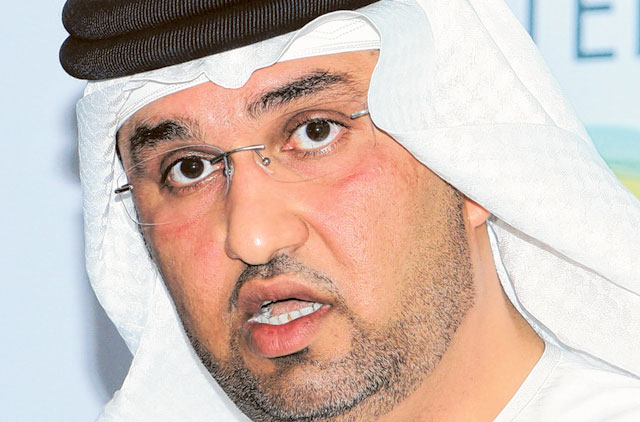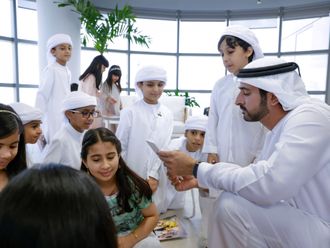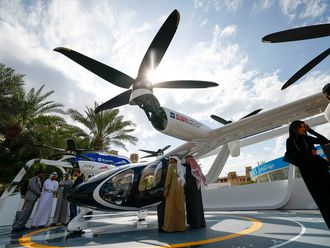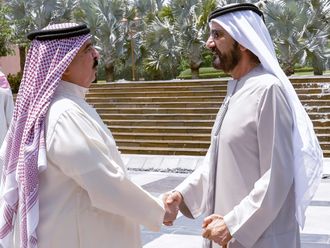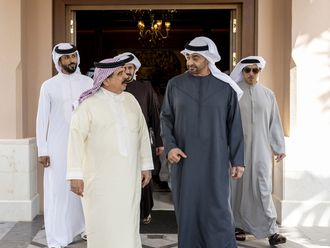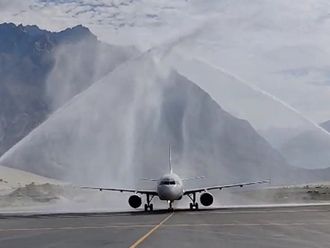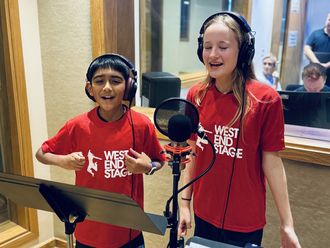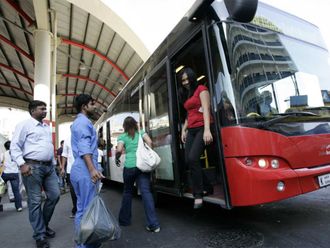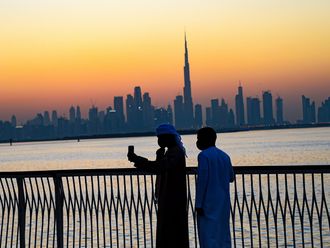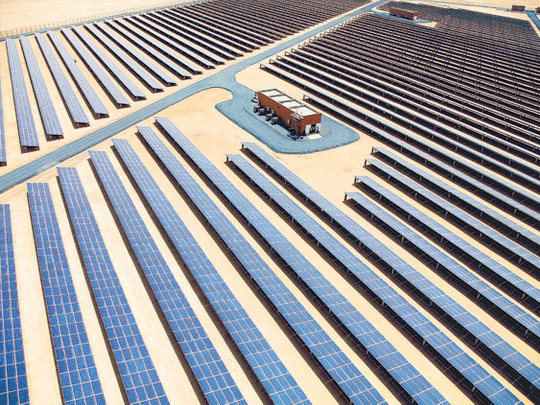
Abu Dhabi: With investments extending from the US to the Seychelles, Masdar has been developing and financing wind and solar energy projects in various parts of the world including the UK, Spain, Germany and Abu Dhabi with an eye on the Middle East and North Africa (Mena) region, Europe and East Asia as well as America, Sultan Al Jaber, minister of state and CEO of Masdar, told Gulf News in an interview.
Al Jaber said that the Emirate of Abu Dhabi is working on a long-term strategy to transform Abu Dhabi’s economy from hydrocarbon-based to a more diversified economy driven by knowledge, innovation and export of clean technologies, pointing out that Masdar has invested in solar PV, concentrated solar power, land-based and offshore wind.
Q. What projects does Masdar seek to invest in?
A. Well, throughout our few years of experience, we have proved that we are leaders in renewable energy worldwide. The clean technology market has been very tough since we started in 2006. This has helped us to get into partnerships with other entities globally from Americas to Asia and Europe as well as Africa. We seek to invest in, manage and elicit yields and returns from technologies of clean tech and renewable energy by launching projects in various places. Be sure that we do not get into any investment project, which is for commercial purposes, such as London Array, the biggest offshore wind plant, without taking into consideration the future prospects and the returns. We thoroughly study and probe into such projects before giving the approval. In addition, we also consult banks which also scrutinise the would-be project or plant in terms of profitability and risk. With this we double check that our investment will have very good returns on investments. We don’t risk our financial resources. We seek the potentials and we do our best to invest in lucrative and profitable projects after thorough scrutiny and feasibility studies from our part and from the part of other partners before giving the green light to get into partnerships.
Q. What are the criteria that you consider when you seek investments abroad?
A. The main criteria are foreign government incentives, the regulatory framework and the long-term investment prospects which will yield returns on the investments. The government of Abu Dhabi has invested in Masdar Dh55.2 billion ($15 billion) as a seed capital and we are very cautious when dealing with investments as we thoroughly study any project many times to avoid any failures as this capital is our fund which we should not waste or deplete. We have to find only suitable and lucrative investments to gain profits. These investments should be run on commercial basis in collaboration with other companies, including banks. We are like custodian on this fund and we are responsible for any penny that is spent.
Q. What countries are you targeting to have investments in the future?
A. Wherever there is an opportunity of good returns on our investments we are ready to invest and we are now looking to invest in the [Mena] region as there is a great demand on renewable energy in the area, particularly in the solar power field. We are now very experienced in solar and wind and others can benefit from our experiences and technologies to produce energy. We have interests in the European Union and East Asia as well as America. We have made a revolution in renewable energy in the region and this has helped us get into partnerships with other companies.
Q. Are there any other kinds of projects that Masdar is interested in setting up?
A. Since our leadership has placed energy at the core of its sustainable development agenda, we had undertaken to meet this requirement through diversifying Abu Dhabi’s energy mix through developing large scale renewable energy projects such as the Shams1 with the capacity of 100 megawatts. However, not all our projects are for commercial purposes. Some of them are for development purposes such as those in Mauritania and Seychelles. We have developed two projects there for renewable energy to sustain development in these countries. For example, last June, we have launched a six-megawatt wind farm in the Port Victoria Wind Power Project in the Republic of Seychelles which consists of eight wind turbines across two small islands off the coast of Mahe to provide electricity to more than 2,100 homes. This was the first large-scale renewable energy plant accounting for 8 per cent of the country’s grid capacity. This is a development project as we helped the people of Seychelles to transform from fossil fuel to renewable energy. This has helped the Seychelles to reduce its carbon footprint and decrease energy outages. The project was financed through a Dh102.8 million ($28 million) grant provided by the Abu Dhabi Fund for Development. Also in April this year, we launched a 15-megawatt solar photovoltaic power plant in Nouakchott, the largest solar power in Africa and this plant accounts for 10 per cent of Mauritania’s grid capacity as it displaces approximately 21,225 tonnes of carbon dioxide per year and supplies demand of more than 10,000 homes in Nouakchott.
Q. How far did the UAE go with renewable energy?
A. We have reached a high level of development and we own high technologies in addition to expertise. This will help us to produce 7 per cent of our electricity through renewable energy by 2020. It will also help us to invest in any project where our experiences and technology will be very lucrative and attractive for others to benefit from.


